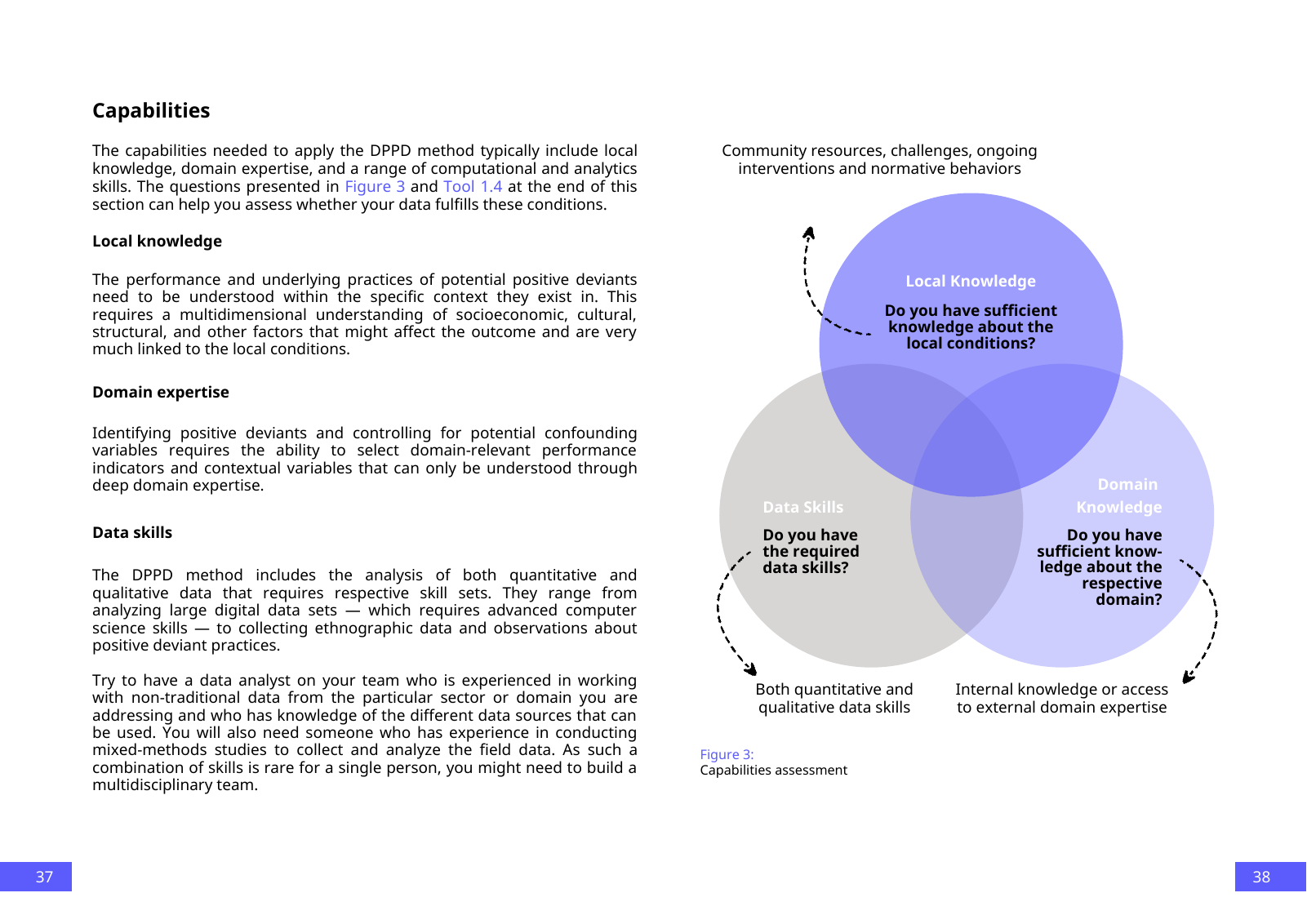Capabilities The capabilities needed to apply the DPPD method typically include local knowledge domain expertise and a range of computational and analytics skills The questions presented in Figure 3 and Tool 1 4 at the end of this section can help you assess whether your data fulfills these conditions Local knowledge The performance and underlying practices of potential positive deviants need to be understood within the specific context they exist in This requires a multidimensional understanding of socioeconomic cultural structural and other factors that might affect the outcome and are very much linked to the local conditions Domain expertise Identifying positive deviants and controlling for potential confounding variables requires the ability to select domain relevant performance indicators and contextual variables that can only be understood through deep domain expertise Data skills The DPPD method includes the analysis of both quantitative and qualitative data that requires respective skill sets They range from analyzing large digital data sets which requires advanced computer science skills to collecting ethnographic data and observations about positive deviant practices Try to have a data analyst on your team who is experienced in working with non traditional data from the particular sector or domain you are addressing and who has knowledge of the different data sources that can be used You will also need someone who has experience in conducting mixed methods studies to collect and analyze the field data As such a combination of skills is rare for a single person you might need to build a multidisciplinary team Data Skills Do you have the required data skills Internal knowledge or access to external domain expertise Local Knowledge Domain Knowledge Community resources challenges ongoing interventions and normative behaviors Do you have sufficient knowledge about the local conditions Do you have sufficient know ledge about the respective domain Both quantitative and qualitative data skills Figure 3 Capabilities assessment 37 38

Hinweis: Dies ist eine maschinenlesbare No-Flash Ansicht.
Klicken Sie hier um zur Online-Version zu gelangen.
Klicken Sie hier um zur Online-Version zu gelangen.